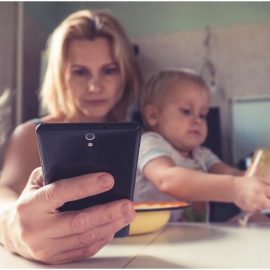

This article is an excerpt from the Shortform book guide to "Biased" by Jennifer L. Eberhardt. Shortform has the world's best summaries and analyses of books you should be reading.
Like this article? Sign up for a free trial here .
What are the causes of bias? In what ways does bias spread through parenting and the media? How can we try to put a stop to the spread of bias?
In her book Biased, Dr. Jennifer Eberhardt explains that the two major causes of bias are through parenting and through media. Luckily, parental influence fades over time it’s possible for children to develop their own views.
Continue reading to learn about the causes of bias and some steps that can be taken to slow the spread.
How Bias Spreads to Others
It’s important to understand the causes of bias and how bias spreads in order to understand why racial bias is so pervasive throughout modern culture. Specifically, in the United States, antiblack bias isn’t confined to one specific region or type of person—it spreads through parenting and popular media into every corner of the country.
Biased Parents Raise Biased Kids
According to Dr. Jennifer Eberhardt in her book Biased, parents are one of the strongest causes of the generational spread of antiblack bias. Young children form their understanding of the world by watching the adults in their lives. When those adults show racial bias—even through subtle cues like body language—kids pick up on the message: This person of another race is treated badly, so they must be bad. The more often they hear that message, the deeper they encode it and adopt it as their own belief.
The Implicit Association Test
To test the impact of parents’ bias on their children, researchers use the implicit association test (IAT), which is the gold standard for testing the strength of implicit biases. The beauty of the IAT is that it doesn’t rely on self-reporting (which is often inaccurate because most people don’t want to admit to being racially biased). Instead, the IAT tests the power of biases operating below conscious awareness by measuring how quickly people associate black and white faces with good and bad words. (Shortform note: If you’re curious about your own implicit biases, you can take the IAT yourself through Harvard’s “Project Implicit.”)
To administer the test, researchers show participants a series of black and white faces on a computer screen interspersed with good words (like “joy”) and bad words (like “evil”). There are two conditions, both of which use only two buttons. In the first condition, participants push one button if they see a black face or a bad word, and the other button for a white face or a good word; in the second condition, participants push one button for a black face or good word, the other for a white face or bad word.
[image] biased_IATconditions.png
The idea behind the IAT is that culturally ingrained bias makes it easier for the brain to associate black faces with bad words (and white faces with good words) than to associate black faces with good words (and white faces with bad words). In the first condition, the task is easy, so response times tend to be quick. But the brain has to work a little bit harder to associate black faces with good words, so the time it takes to push the right button is a little bit longer—the stronger the bias, the harder the brain has to work to associate “black” with “good,” and the longer it takes to respond. The IAT estimates the strength of a person’s implicit biases by measuring the difference between response times for the two conditions. When it comes to parenting, the results of the IAT confirm that heavily biased parents tend to raise heavily biased kids.
Parents’ Influence on Kids’ Racial Bias Fades Over Time
For young children, having a parent with strong implicit bias makes them less sympathetic when they see a black child being teased versus a white child. Interestingly, older children are typically very sympathetic to teasing victims of any race, regardless of how biased their parents may be. That might be because kids begin to form their own views of the world, separate from their parents, as they grow up and interact with more people.
Bias in the Media
Bias also spreads through all forms of media. Growing awareness of media inequality in the early 21st century led to a major rise in the representation of black characters in leading roles in film and television. Eberhardt cautions that media representation is powerful, but seeing black surgeons and superheroes on screen is not enough to eliminate anti-black bias—in fact, it can even reinforce it. This effect is subtle and often subconscious, but still very real.
To test this effect, researchers took clips from shows that have strong, positive portrayals of black characters (including CSI and Grey’s Anatomy) and muted the sound. Then they compiled a series of clips of various white characters talking to the same unseen character (sometimes black, sometimes white), who was either offscreen or edited out. They showed these clips to study participants who had never seen that particular show and asked them to rate how much the white characters, as a whole, liked and respected the unseen character, based only on the white characters’ nonverbal cues.
The results of this study were significant: The offscreen characters that participants rated as less liked and well-treated by the other characters were significantly more likely to be black. In other words, white characters treated other white characters more positively than they treated black characters, and that difference was big enough that viewers picked up on it even without dialogue.
The perceivable bias in well-meaning TV shows isn’t just unfortunate—it’s dangerous. After viewing the clips, participants took an implicit association test. The more negatively they perceived the show’s white characters’ behavior toward the offscreen black characters, the more antiblack bias they showed on the IAT—even when they didn’t know the poorly-treated unseen characters were black. These results show that creating more positive roles for black characters isn’t enough to actively combat anti-black bias in the media.
Could Inclusion Riders Solve Popular Media’s Bias Problem?
An increase in positively portrayed black characters on TV is a good first step, but the overall media landscape is still far from equal. A study of the 100 highest-grossing films of each year from 2007-2015 found that black characters made up 12% of speaking roles. While this might seem promising because black people make up roughly 13% of the American population, it’s not the full picture because a few movies with majority-black casts skewed the results. In fact, in 2015, only 10 of the top 100 films were cast in a way that reflects the actual population (meaning they featured black people in roughly 13% of the film’s speaking roles). Even worse, a full 17% of films featured zero black characters in speaking roles.
How can we solve this problem? Inclusion riders are one possibility. Inclusion riders (also called equity riders) are contractual clauses stipulating that the cast and crew of a film must include people from underrepresented groups in the industry, like women, people of color, and people with disabilities. If big-name actors and filmmakers add inclusion riders into their contracts, they can leverage their fame to open doors for talented people and ultimately create a more realistically diverse film industry.

———End of Preview———
Like what you just read? Read the rest of the world's best book summary and analysis of Jennifer L. Eberhardt's "Biased" at Shortform .
Here's what you'll find in our full Biased summary :
- How implicit bias forms in the brain
- Whether or not bias training actually works
- Why there has been a sudden resurgence in white nationalism






